Sources
- "Schneider S.A.", International Directory of Company Histories, The Gale Group, Inc., vol. II, 18, 19, 108
- "Group Schneider S.A.", International Directory of Company Histories, The Gale Group, Inc., vol. 20
Empain-Schneider was a Franco-Belgian industrial group formed in the 1960s from the merger of Belgium's Empain group and France's Schneider & Cie. In 1980, it was renamed Schneider SA. Throughout the 1980s and 1990s, the group was comprehensively restructured and sold most of its historic activities while acquiring operations linked to electrical equipment, leading up to its renaming in 1999 as Schneider Electric.
In 1963, the Empain group acquired control of Schneider & Cie from the Schneider family, following the untimely death in 1960 of Charles Schneider. Despite economic-nationalistic misgivings from France's president Charles de Gaulle, [1] the two groups gradually integrated their operations and structures in the following decade:
Schneider's historic steelmaking subsidiary, the Société des Forges et Ateliers du Creusot (SFAC), merged in 1970 with the Compagnie des Ateliers et Forges de la Loire to form Creusot-Loire. [3]
In nuclear engineering, Schneider, via the SFAC, had been a major stakeholder of Framatome since its creation in 1958, and became its dominant shareholder in 1976 by acquiring the 15-percent stake previously held by Westinghouse Electric Corporation.
In 1980, the Empain family sold most of its stake, and the holding entity, by then led by Didier Pineau-Valencienne who had worked in the Empain Group since 1958, was renamed Schneider SA to signal its newly predominant French identity. In 1981, Paribas became Schneider's controlling shareholder. [1] In 1983 the group's bank, the BUE, was acquired by Crédit Industriel et Commercial. Creusot-Loire went into insolvency in 1984 and subsequently left the Schneider group's scope. Between 1986 and 1992, much of Jeumont-Schneider was sold in parts to Alstom, Bosch, and Framatome. Meanwhile, Schneider acquired Télémécanique in 1988, Square D in 1991 through a hostile takeover, and in 1992, full ownership of Merlin Gerin (est. 1920) in which it had held a stake since 1975. Spie Bagnitolles was divested in 1996, largely completing Schneider's transformation from conglomerate to a global manufacturing company focused on electrical equipment. In 1999, the company was correspondingly renamed Schneider Electric. [4]
Electrorail, formerly a major holding company within the Empain group galaxy, remained traded on the Brussels Stock Exchange until delisting in 2003. [5] Its former head office (French : Siège d'Électrorail ) is a noted art deco building in Brussels.
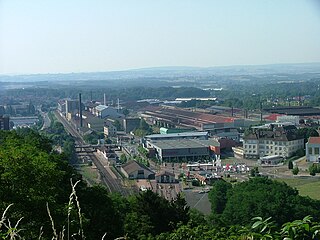
Le Creusot is a commune and industrial town in the Saône-et-Loire department, region of Bourgogne-Franche-Comté, eastern France.

Banque Indosuez was a French bank, the product of the 1975 merger of Banque de l'Indochine and Banque de Suez et de l'Union des mines. It was purchased by Crédit Agricole in 1996, and formed the core of what is now Crédit Agricole Corporate and Investment Bank. As of 2022, its brand survives in Indosuez Wealth Management, the Crédit Agricole group's wealth management arm.
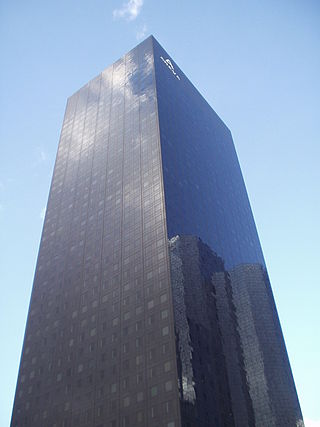
Framatome is a French nuclear reactor business. It is owned by Électricité de France (EDF) (75.5%), Mitsubishi Heavy Industries (19.5%), and Assystem (5%).
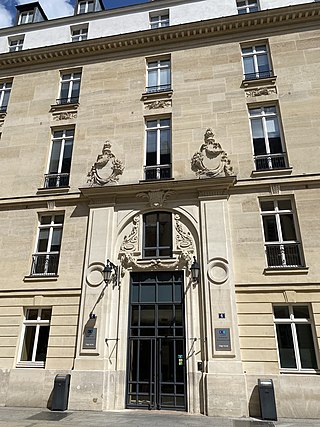
The Crédit Industriel et Commercial is a bank and financial services group in France, founded in 1859. It has been majority owned by Crédit Mutuel, one of the country's top five banking groups, since 1998, and fully owned since 2017.

Spie Batignolles is a French construction company based in Neuilly-sur-Seine. The company provides building and infrastructure construction in France, Germany, the United Kingdom, Spain, Portugal and Switzerland.

Jeumont is a commune in the Nord department in northern France. It lies on the Belgian border and on the river Sambre, adjacent to the Belgian town Erquelinnes. It is part of the agglomeration of Maubeuge.

SA Ateliers de Constructions Electriques de Charleroi (ACEC) was a Belgian manufacturer of electrical generation, transmission, transport, lighting and industrial equipment, with origins dating to the late 19th century as a successor to the Société Électricité et Hydraulique founded by Julien Dulait.

The Société de Construction des Batignolles was a civil engineering company of France created in 1871 as a public limited company from the 1846 limited partnership of Ernest Gouin et Cie.. Initially founded to construct locomotives, the company produced the first iron bridge in France, and moved away from mechanical to civil engineering projects in France, North Africa, Europe, and in East Asia and South America.
Jeumont-Schneider was a French electric and mechanical engineering group, founded in 1964.
Creusot-Loire was a French engineering conglomerate, formed from factories in Le Creusot and Châteauneuf, Loire. The Creusot-Loire subsidiary of ArcelorMittal also includes an Innovation, Research and Development centre for the group.

Schneider et Compagnie, also known as Schneider-Creusot for its birthplace in the french town of Le Creusot, was a historic French iron and steel-mill company which became a major arms manufacturer. In the 1960s, it was taken over by the Belgian Empain group and merged with it in 1969 to form Empain-Schneider, which in 1980 was renamed Schneider SA and in 1999, after much restructuring, Schneider Electric.

The Banque de l'Union Parisienne (BUP) was a French investment bank, created in 1904 and merged into Crédit du Nord in 1973.
The Compagnie des forges et aciéries de la marine et d'Homécourt (FAMH) was a French industrial enterprise that made iron and steel products for the French navy, army and railroads. It is often known as Saint-Chamond from its main location in Saint-Chamond, Loire.

SNCF BB 69000 were a pair of two prototype high-power diesel-hydraulic locomotives, numbered BB 69001 and BB 69002. They were built at the same time, and for comparison with, as a diesel-electric version, CC 70000. The use of hydraulic transmission saved 30 tons in weight and enabled the locomotives to run on four axles instead of the six axles of the diesel-electric.
Francorail was a grouping of French railway rolling stock manufacturers, formed in the early 1970s and defunct by the late 1980s.
Jeumont may refer to:
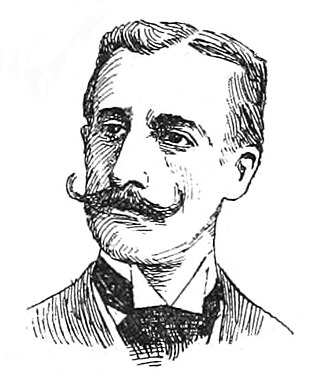
Charles Prosper Eugène Schneider, also known as Eugène Schneider II, was a French industrialist, head of Schneider-Creusot, politician and inventor. In 1923, he was awarded the John Fritz Medal.
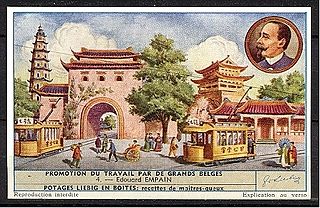
The Empain group was a loose grouping of companies founded by Édouard Empain (1852–1929) of Belgium and controlled by the Empain family. From 1881 until merging with Schneider & Cie in 1969, the companies engaged in a broad range of activities including tramways, railways, electricity generation, construction and mining. The main areas of activity were Belgium and France, but the group also pursued opportunities in Russia, Egypt, China and elsewhere, and played a large role in the development of the eastern Belgian Congo.

The Société Belge de Banque was a medium-sized Belgian bank, established in 1901 as the Banque Générale Belge, renamed in 1932, and eventually merged in 1965 into the Société Générale de Banque.

The Banque Italo-Belge was a Belgian bank established in 1911 on the initiative of the Société Générale de Belgique (SGB) jointly with Credito Italiano and other partners. Despite its name, it operated mainly in South America. It was known as the Banque Brésilienne Italo-Belge before 1913, and Banque Européenne pour l'Amérique Latine (BEAL) after 1974. By the late 1930s, it was the fourth-largest Belgian bank by total assets behind the Banque de la Société Générale, Banque de Bruxelles, and Kredietbank.